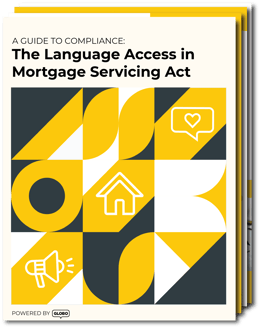Stay up to date.
Stay connected with tips, resources & stories on language access.

In 2021, Texas Congressional representative Silvia Garcia introduced the Language Access in Mortgage Servicing Act (H.R. 3009) to amend the Truth in Lending Act and the Real Estate Settlement Procedures Act of 1974. Her goal is to establish language access requirements for creditors and servicers, providing better access to people with limited-English proficiency (LEP) who have a mortgage or want to apply for one.
In 2020, the U.S. Census Bureau released a report about race and ethnic populations in the United States ahead of the release of the full census data. The findings revealed that 40% of Americans now identify as a member of a racial or ethnic group besides white. According to estimates, nonwhite minorities in the U.S. will represent a majority of the population as early as 2045 — and early 2020 census data reveals that the U.S. white population is declining faster than anticipated.
One of the key drivers of minority population growth in the U.S. is immigration. Today, more than one in five people in the U.S. speak a language other than English at home (21.6%). The number that reports speaking English “less than very well” (the definition of LEP) is 8.4% on average across the country, but in some states and counties, it is as high as one in three people.
For mortgage lenders and creditors, this shift represents a significant opportunity to reach new customers. It also presents some challenges. Language barriers can make the mortgage or loan process even more difficult for LEP borrowers. But the right language support and translation services can help these consumers gain access to new products and services and improve their overall customer experience.
 What’s Included in the Language Access in Mortgage Services Act
What’s Included in the Language Access in Mortgage Services ActRep. Garcia’s goal with H.R. 3009 is to reduce stress for LEP borrowers who want to access loans, buy a home, or engage with a loan servicer. It builds on Title VI of the Civil Rights Act of 1964, which prohibits discrimination on the basis of national origin.
Unfortunately, almost 60 years after that bill was signed into law, there are still no specific requirements for lenders to offer language support to LEP borrowers. This bill:
The bill also proposes a timeline for when companies would need to comply with these requirements. It specifies that the Consumer Financial Protection Bureau (CFPB) will be the agency in charge of overseeing the implementation and how they will enforce it.
In a press release about the Language Access in Mortgage Servicing Act, Rep. Garcia highlighted the reality that millions of families who do not speak English well have significant barriers to buying a home, getting a loan, or engaging with creditors.
That adds to an already complex financial picture for immigrant and minority communities. The Federal Deposit Insurance Commission found that over seven million households in the U.S. do not have access to a checking account, savings account, or credit union and are considered “unbanked.” That rate is five to six times higher for minority households, and language barriers contribute to a significant part of that gap for immigrant populations. There are also millions of people who speak English well enough to work and communicate day to day but struggle to understand complex financial terminology and concepts in mortgages and loans.
Currently, H.R. 3009 remains under review in the House Subcommittee on Economic Opportunity. That means it’s not officially law yet, and getting it through all the steps necessary to become law will still take some time. However, that doesn’t mean mortgage lenders and servicers can ignore the need for improving language access to LEP borrowers.
In January 2021, the CFPB released its own statement with new guidelines to encourage financial institutions to expand access to LEP borrowers. Many of the recommendations in their statement are similar to the Language Access in Mortgage Servicing Act, including:
Download our free eBook: A Guide to Compliance: Language Access in Mortgage Servicing Act. This step-by-step guide helps you proactively prepare for language access requirements, eliminate "legacy thinking" that keeps organizations from addressing the changes to come, and find the right language support partner to make it happen.